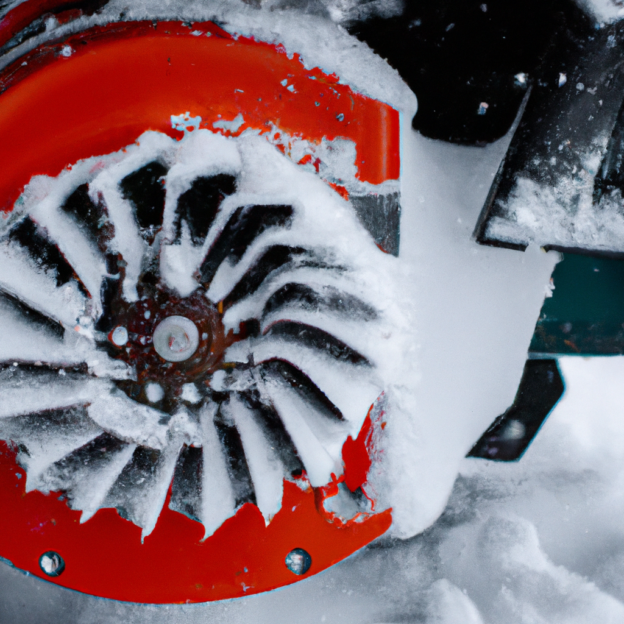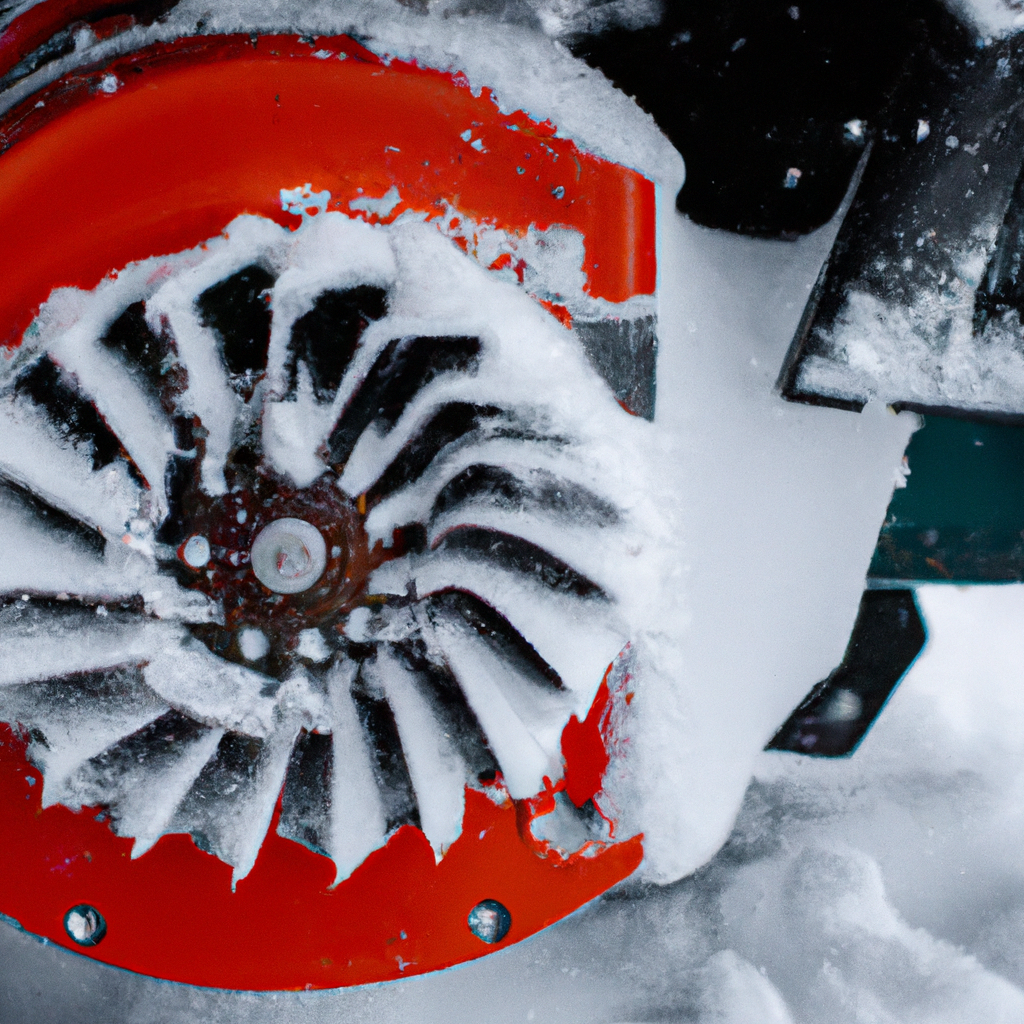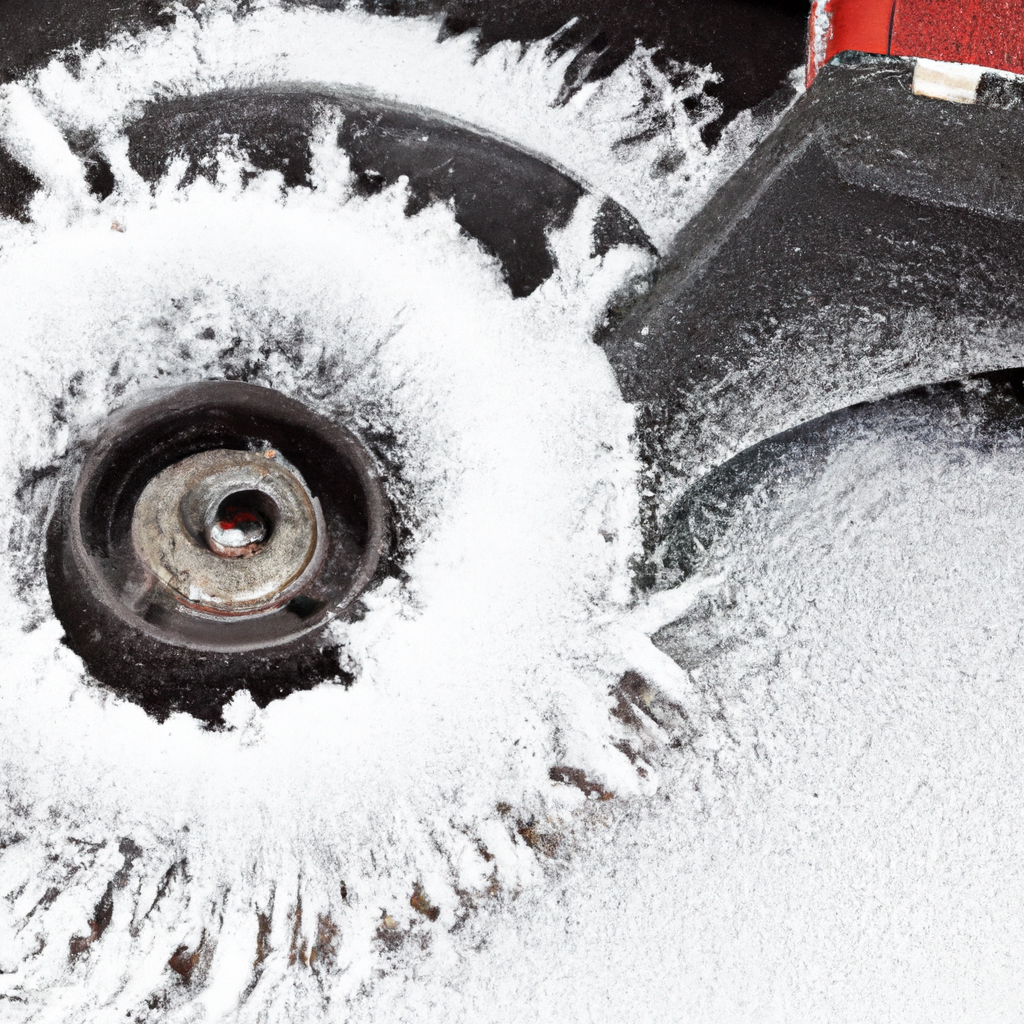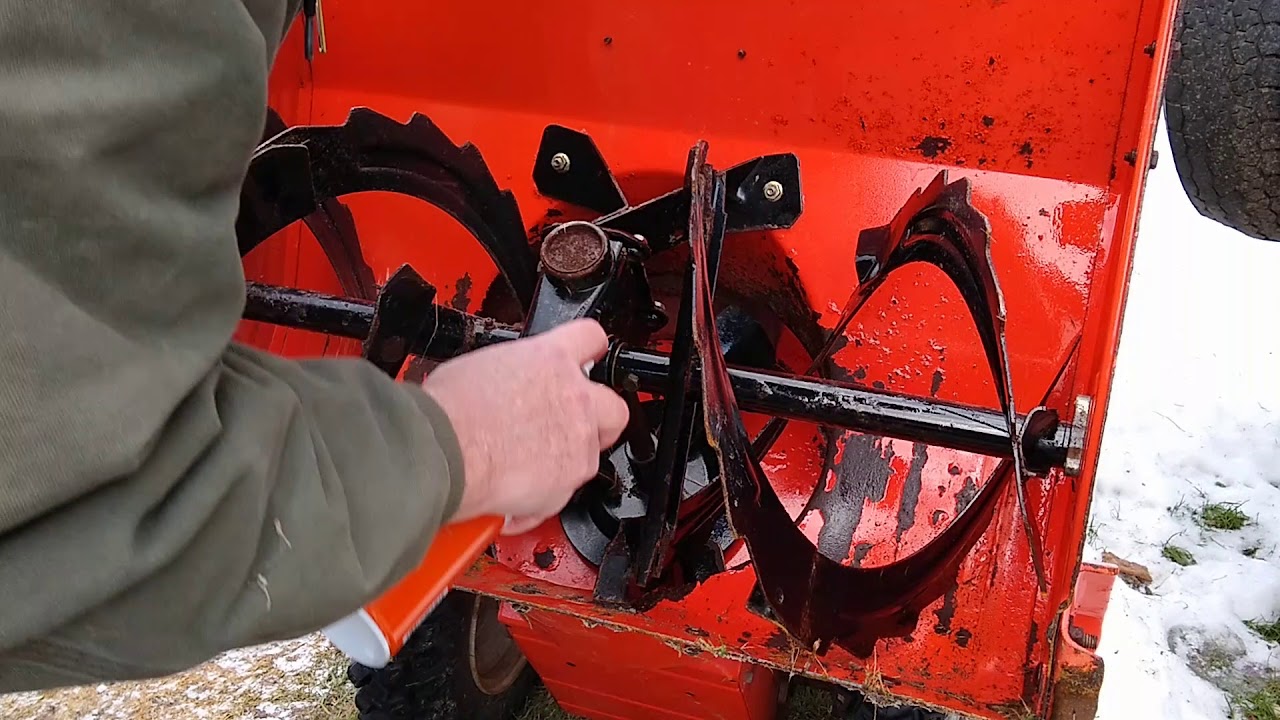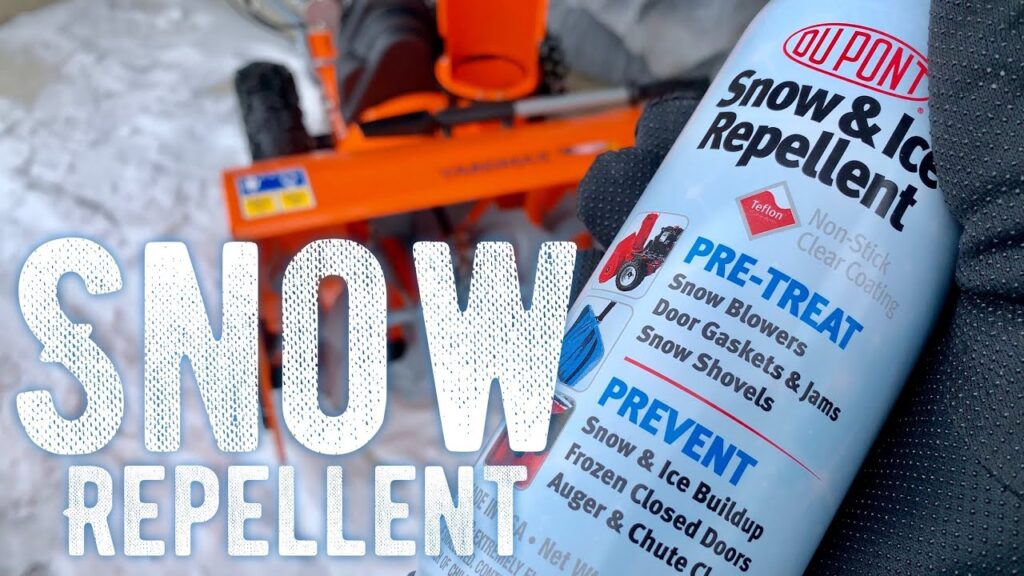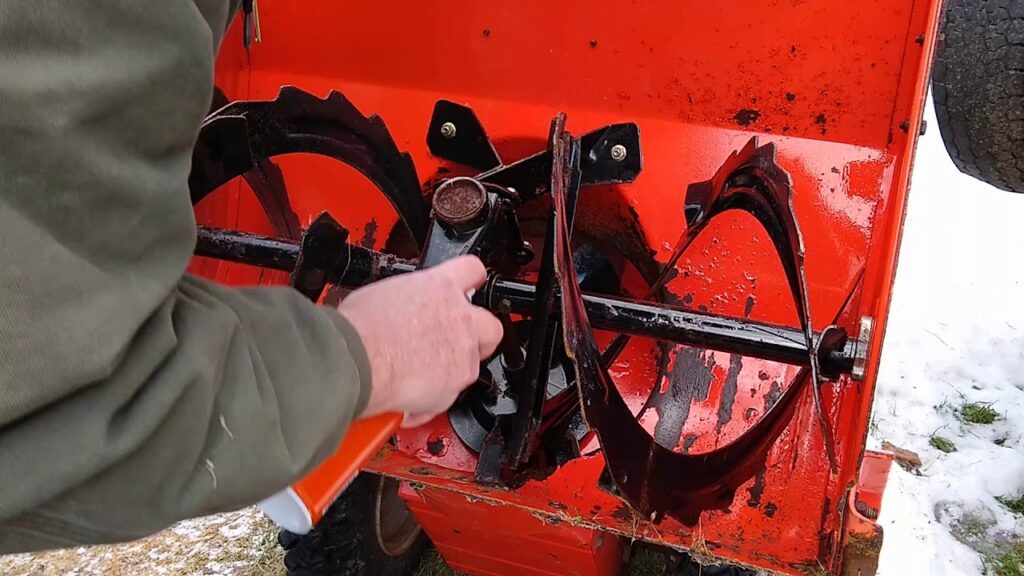So you’re ready to tackle the winter wonderland and get to work clearing out that snow, but there’s one pesky problem standing in your way: snow sticking to the chute. It’s frustrating, time-consuming, and can put a serious damper on your snow removal plans. But fear not, because in this article, we’re going to dive into some simple yet effective solutions that will keep that snow sliding smoothly and prevent any future sticking mishaps. Say goodbye to snowy roadblocks and hello to efficient snow removal!
Choosing the Right Material for the Chute
When it comes to preventing snow from sticking to the chute of your snowblower, choosing the right material for the chute itself plays a crucial role. There are a few factors to consider in this regard.
Consider the Material’s Texture
To minimize snow sticking to the chute, opt for materials with a smooth texture. Uneven or rough surfaces can provide more friction and give the snow a better grip, leading to accumulation and blockages. Look for chutes made of materials such as metal or plastic with a smooth finish.
Choose a Material with Low Coefficient of Friction
The coefficient of friction is a measure of how resistant two surfaces are to slide against each other. When it comes to preventing snow from sticking to the chute, it’s essential to select a material with a low coefficient of friction. This characteristic reduces the chances of snow clinging to the surface, allowing it to slide off more easily. Consider materials like polyethylene or UHMW (ultra-high-molecular-weight) plastic, known for their low coefficients of friction.
Look for Hydrophobic Coatings
Hydrophobic coatings are designed to repel water and other liquids, making them an excellent choice for preventing snow from sticking to the chute. These coatings create a slippery surface, reducing snow adhesion. Look for chutes that come pre-coated with a hydrophobic material, or consider applying a hydrophobic spray or wax for added protection.
Waxing the Chute
Applying a wax coating to the chute is another effective way to prevent snow from sticking. Wax creates a smooth and slippery surface, allowing snow to slide off more easily. Here’s how you can do it:
Apply a Wax Coating
Start by thoroughly cleaning the chute and removing any existing snow or debris. Once cleaned, apply a layer of wax to the surface. You can use any commercial snowmobile or ski wax, as they are designed to withstand cold temperatures and provide optimal lubrication. Make sure to cover the entire chute evenly.
Regularly Reapply the Wax
Over time, the wax coating may wear off due to the friction and exposure to snow and ice. It’s important to regularly reapply the wax to ensure snow doesn’t start sticking to the chute. Depending on the frequency of use and snow conditions, you may need to wax the chute every few uses or once a season.
Applying a Non-Stick Spray
Using a non-stick spray is another effective method to prevent snow from sticking to the chute. Non-stick sprays create a slippery layer on the surface, minimizing snow adhesion.
Select a Suitable Non-Stick Spray
Choose a non-stick spray specifically designed for use in cold temperatures. Look for products that mention snowblower chute or winter equipment on their labels. These sprays are formulated to withstand freezing conditions and provide optimal lubrication.
Apply the Non-Stick Spray Properly
Before applying the spray, clean the chute to ensure there is no snow or dirt on the surface. Follow the instructions on the spray bottle and apply an even coating to the chute. Allow the spray to dry before operating the snowblower. Remember to reapply the non-stick spray as needed, especially after cleaning the chute or during prolonged use.
Using a Heat Source
Using a heat source is an effective method to prevent snow from sticking to the chute. Heating the surface slightly can melt the snow and create a temporary film of water, preventing further snow buildup.
Use a Heat Gun or Blow Dryer
To apply heat to the chute, you can use a heat gun or a blow dryer. Set the heat source to a low or moderate temperature and direct the airflow towards the chute. Move the heat source back and forth along the surface until the snow starts melting. Be sure to keep a safe distance and avoid overheating the material, as it may cause damage or warping.
Be Cautious with Heat Sources
While using a heat source can be effective, it’s essential to exercise caution. Avoid using high heat settings or leaving the heat source in one spot for too long, as this can lead to material damage or discoloration. Additionally, be mindful of the surroundings and avoid exposing any flammable materials or surfaces to the heat source.
Coating with Silicone
Another option for preventing snow from sticking to the chute is to apply a silicone lubricant. Silicone creates a slippery surface that snow has difficulty adhering to.
Obtain a Silicone Lubricant
Look for a silicone lubricant that is suitable for outdoor use and can withstand low temperatures. Check if the product is explicitly labeled for snowblowers or winter equipment. Silicone lubricants in spray form are convenient to apply and provide an even coating.
Apply Silicone Lubricant to the Chute
Before applying the silicone lubricant, make sure the chute is clean and free of any snow or debris. Spray the lubricant evenly over the surface of the chute, taking care to cover the entire area. Allow the silicone to dry before operating the snowblower. Remember to reapply the silicone lubricant as needed to maintain the anti-stick properties.
Creating a Physical Barrier
Creating a physical barrier between the chute and the snow can be an effective way to prevent snow from sticking. Here are a couple of methods to achieve this:
Cover the Chute with Plastic Sheet or Tarp
Before operating the snowblower, cover the chute with a plastic sheet or tarp. Secure the covering tightly so that it doesn’t interfere with the snowblower’s operation. This barrier prevents direct contact between the chute and the snow, reducing the chances of snow sticking.
Use a Teflon or Plastic Chute Liner
Another option is to install a Teflon or plastic chute liner inside the chute. These liners create a smooth and slippery surface that makes it harder for snow to adhere. Follow the manufacturer’s instructions to properly install the chute liner, ensuring it fits securely.
Adjusting the Chute Angle
The angle of the chute can have an impact on snow discharge and how likely it is for snow to stick. Adjusting the chute angle can help reduce snow buildup.
Increase the Chute’s Angle
By increasing the angle of the chute, you allow the snow to be expelled at a higher trajectory. This increased distance between the chute and the ground can help prevent snow from falling back onto the chute and sticking. Most snowblowers have adjustable chute angles, so consult your snowblower’s manual for instructions on how to adjust it.
Consider the Impact on Snow Discharge
While adjusting the chute angle can reduce snow sticking, it’s important to consider the overall impact on snow discharge. A steep angle may cause the expelled snow to travel too far or in an undesired direction. Find a balance that minimizes snow sticking while still effectively directing the discharged snow away from walkways and driveways.
Regular Maintenance and Cleaning
Regular maintenance and cleaning of the chute are crucial to prevent snow from sticking and ensure optimal performance of your snowblower.
Clean the Chute After Each Use
After each use, take the time to clean the chute thoroughly. Use a brush or scraper to remove any remaining snow or ice. Pay extra attention to corners or crevices where snow may accumulate. Removing any residual snow helps prevent it from solidifying and sticking when the snowblower is not in use.
Remove Accumulated Snow and Ice
If snow or ice has accumulated and frozen inside the chute, it’s important to remove it before using the snowblower again. This can be done by carefully chipping away at the ice or using warm water to melt it. Avoid using sharp objects that may damage the chute or cause injury.
Inspect for Any Damage or Corrosion
Regularly inspect the chute for any signs of damage or corrosion. Damaged areas can lead to irregularities on the surface, providing areas where snow can stick. If you notice any damage, consider repairing or replacing the affected parts to maintain optimal chute performance.
Clearing the Snow with a Shovel
In situations where the snowblower may not be suitable or available, using a traditional shovel can also help prevent snow from sticking to the chute.
Use a Shovel to Remove Snow Buildup
When you notice snow starting to accumulate on the chute during operation, stop the snowblower, and use a shovel to remove the excess snow. Carefully guide the shovel along the chute to clear any obstructions. This manual removal helps prevent further snow buildup and sticking.
Avoid Damaging the Chute with the Shovel
While using a shovel to remove snow buildup from the chute can be helpful, it’s crucial to exercise caution and avoid causing damage. Be mindful of the shovel’s edges and avoid scraping or hitting the chute forcefully. Gentle and controlled movements are key to protecting the chute while effectively clearing the snow.
Proper Operation Techniques
In addition to the preventive measures mentioned earlier, implementing proper operation techniques can also help minimize snow sticking to the chute.
Avoid Overloading the Chute
One common mistake is overloading the chute by trying to clear too much snow at once. This can overwhelm the snowblower’s capacity and cause snow to clog the chute. Clear smaller portions of snow at a time, allowing the snowblower to effectively discharge the snow without overloading the chute.
Utilize the Chute Deflector
Most snowblowers come with a chute deflector, which allows you to adjust the height or distance that the snow is thrown. Properly positioning the deflector ensures that the discharged snow is directed away from areas where it can fall back onto the chute and stick.
Operate the Snowblower at the Correct Speed
Operating the snowblower at the correct speed can also help prevent snow from sticking to the chute. Going too fast can cause the snow to not discharge properly or accumulate on the chute surface. Likewise, going too slow may not provide enough force to effectively discharge the snow. Find a speed that allows for efficient snowblowing while minimizing snow sticking.
By considering the material of the chute, applying coatings, adjusting angles, and utilizing proper techniques, you can significantly reduce the occurrence of snow sticking to the chute. Remember to regularly maintain and clean the chute to ensure optimal performance. With these tips in mind, you’ll be able to tackle snowy conditions more effectively and keep your snowblower running smoothly. Stay proactive and enjoy a snow-free chute all winter long!
